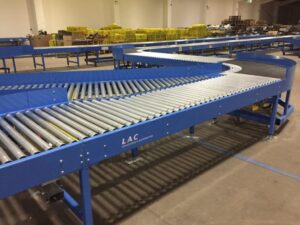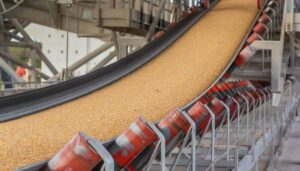Conveyor belts are the backbone of industrial material handling. From aggregate operations and mining to food processing and feed mills, these systems move materials efficiently—until something breaks. When that happens, conveyor belt repair isn’t just a quick fix; it’s a crucial step in preventing costly downtime and long-term damage to your operation.
At Outlook Enterprises, we know the challenges that come with keeping conveyor systems running at peak performance. In this guide, we’ll walk through how to approach conveyor belt repair, what common components to monitor, and why working with the right supplier matters.
Understanding the Basics of Conveyor Systems
A typical industrial conveyor system consists of more than just the belt. It includes rollers, pulleys, bearings, motors, gearboxes, and support frames. Damage or wear in any of these areas can trigger system-wide inefficiencies—or complete shutdowns.
Regular maintenance and proactive conveyor belt repair help avoid these problems. Issues like belt misalignment, worn-out rollers, or seized bearings can often be identified early and resolved before causing larger failures.
Common Conveyor Belt Failures and How to Fix Them
Knowing what to look for is half the battle. Here are some of the most frequent issues that lead to conveyor belt repair:
- Belt Tears or Delamination: Caused by sharp materials or over-tensioning. Patching or splicing may be required.
- Misalignment: Can wear down belt edges or damage side walls. Realignment of idlers or pulleys is often the fix.
- Seized Bearings: Often lead to belt tracking problems. Replacing pillow block or take-up bearings is a common repair.
- Roller or Pulley Wear: Results in vibration, slippage, or tracking issues. Replacing damaged rollers is key.
- Contamination or Build-up: Causes belt slip and motor strain. Cleaning and installing belt cleaners (like Benetech’s) helps prevent this.
These problems, if caught early, can usually be fixed quickly with the right parts—and minimal impact on production.

Sizing and Selecting the Right Conveyor Belt
One of the most important elements of conveyor belt repair is making sure you have the right belt type and size for your system. At Outlook Enterprises, we offer a wide selection, including 1-ply, 2-ply, and 3-ply belts with top covers ranging from 1/8″ to 1/4″.
Standard widths include 20″, 24″, 28″, 30″, 36″, 48″, and 72″, and we also support custom configurations. Smooth, cleated, and notched designs are available depending on the application. If you’re repairing a belt on-site, we offer “punch and skive” services and skiver rentals to make splicing easier and more effective.
Beyond the Belt: Repairing System Components
Conveyor belt repair isn’t limited to the belt itself. It often includes supporting components such as:
- Idler and return rollers
- Head and tail pulleys
- Take-up bearings and brackets
- Gearboxes and electric motors
Failure in any of these components can affect belt performance. That’s why Outlook Enterprises supplies a complete range of conveyor belt repair parts—designed for concrete plants, feed mills, aggregate yards, rendering facilities, and more.
We support both standard and heavy-duty belt systems and can match components to existing systems or help design a custom solution.
When to Repair and When to Replace

There’s always a judgment call when deciding between repair and full replacement. Some belts can be patched or spliced in place. Others may have reached the end of their service life. If you’re experiencing repeated tears, belt edge damage, or excessive stretching, it might be time for a new belt altogether.
The same is true for rollers and bearings—frequent failure or overheating is a sign they’re no longer viable. Performing timely repairs can prevent these small issues from becoming operational disasters.
Trusted Solutions from Benetech
To further improve performance, Outlook Enterprises offers belt components from Benetech, a leader in bulk material handling systems. Products like their MaxZone® Load Zone Systems and belt cleaners are ideal for reducing spillage, minimizing carryback, and improving safety—key goals in any conveyor belt repair or upgrade strategy.
Repair Now, Save Later
Regular inspection and preventative maintenance are your best tools in avoiding unexpected repair costs. Whether you’re replacing a bearing or rebuilding a full conveyor zone, early action pays off. With the right conveyor belt repair parts on hand, you’ll reduce downtime, extend the life of your system, and save money in the long run.
At Outlook Enterprises, we make it easier to source the right parts, fix issues fast, and keep your systems moving. Whether you need belts, bearings, pulleys, or complete system components—we’re here to help.
